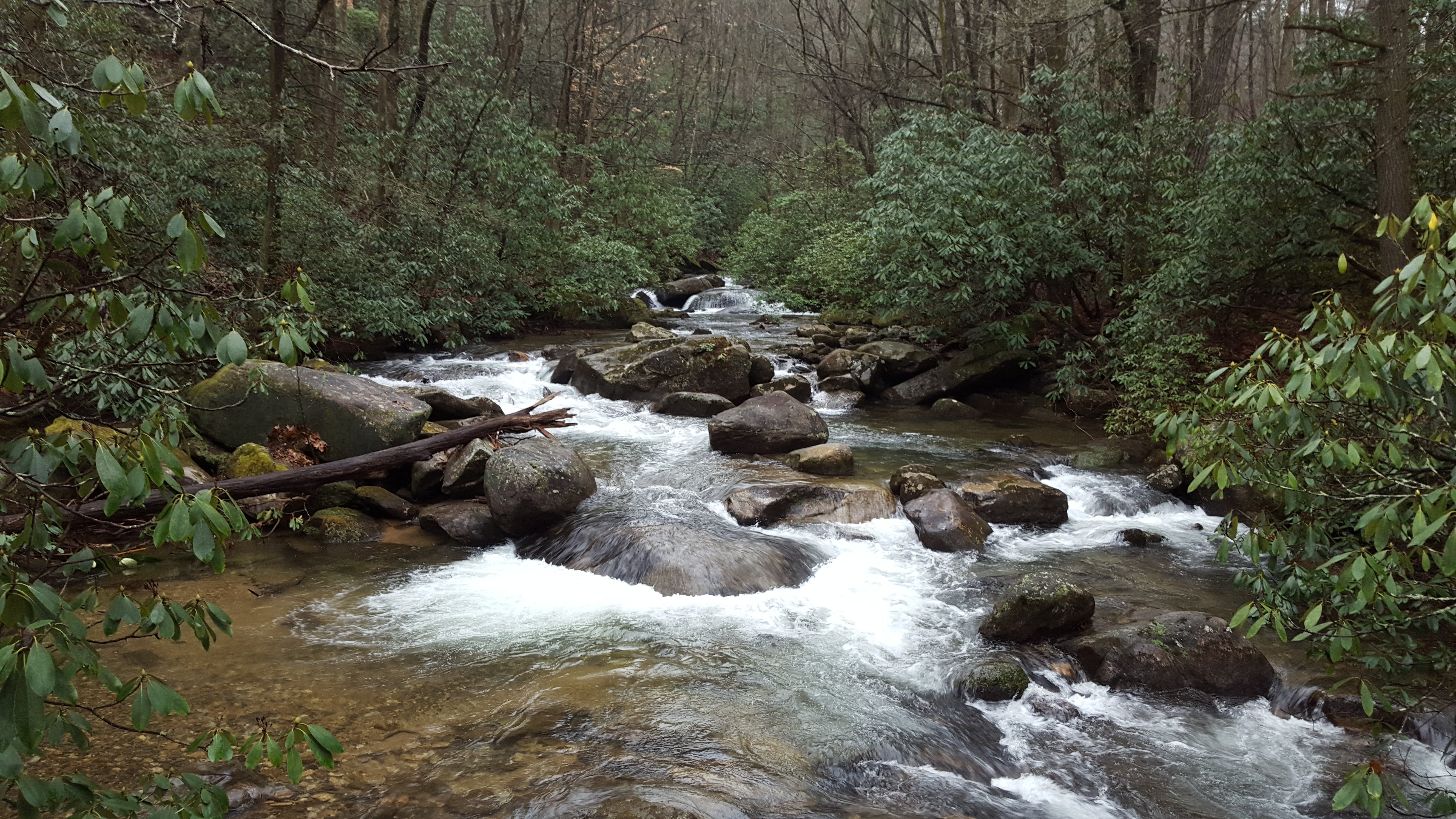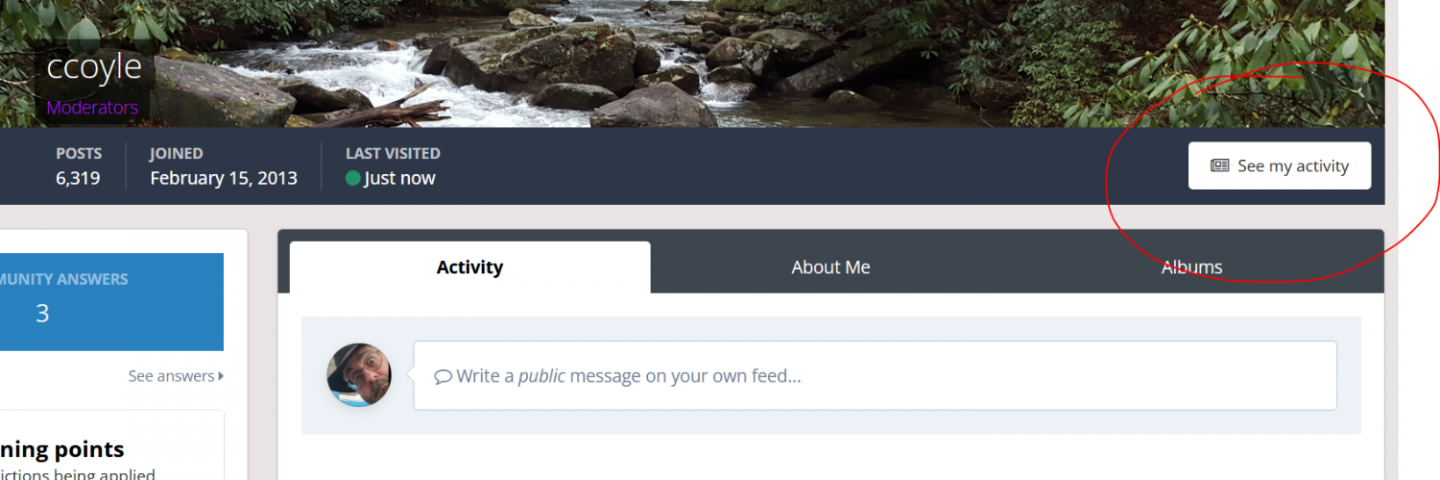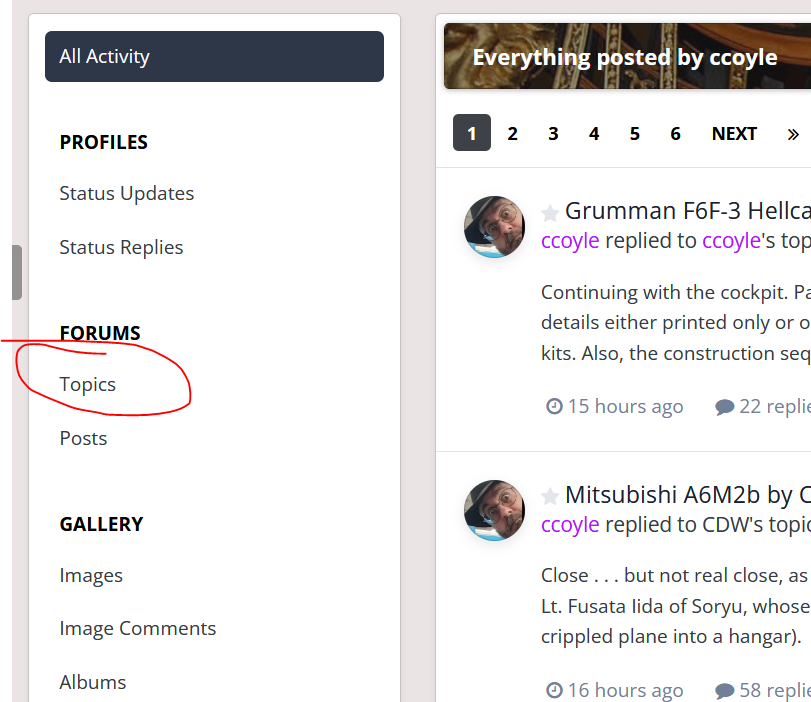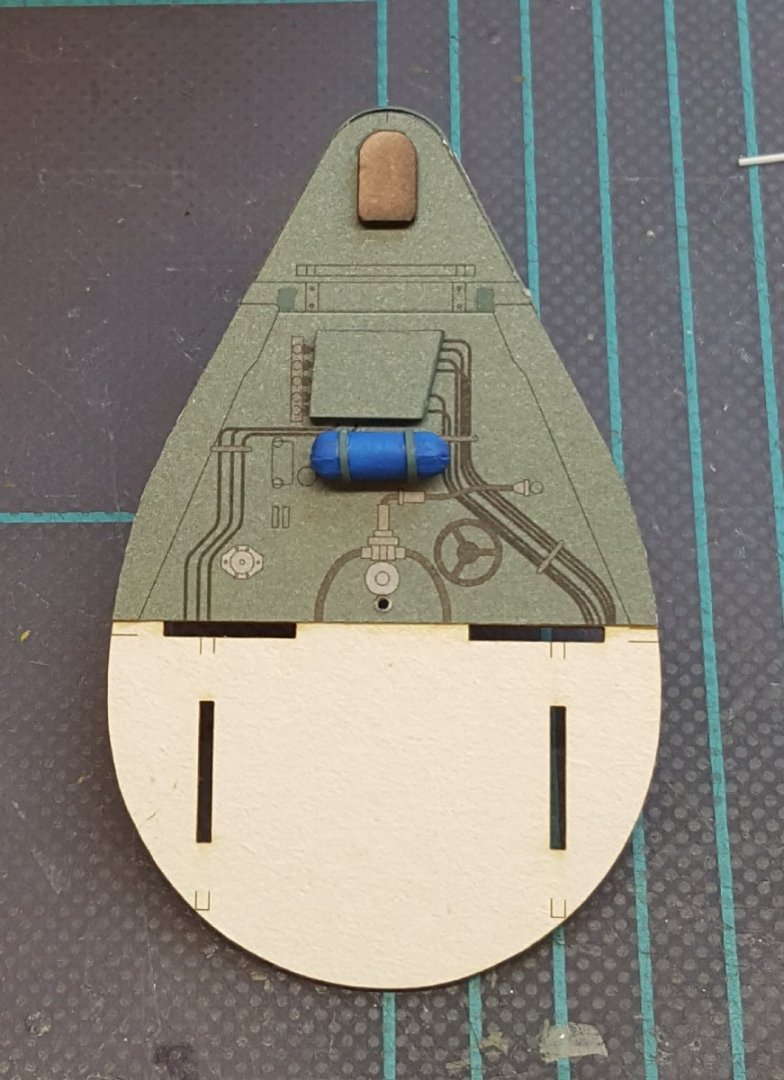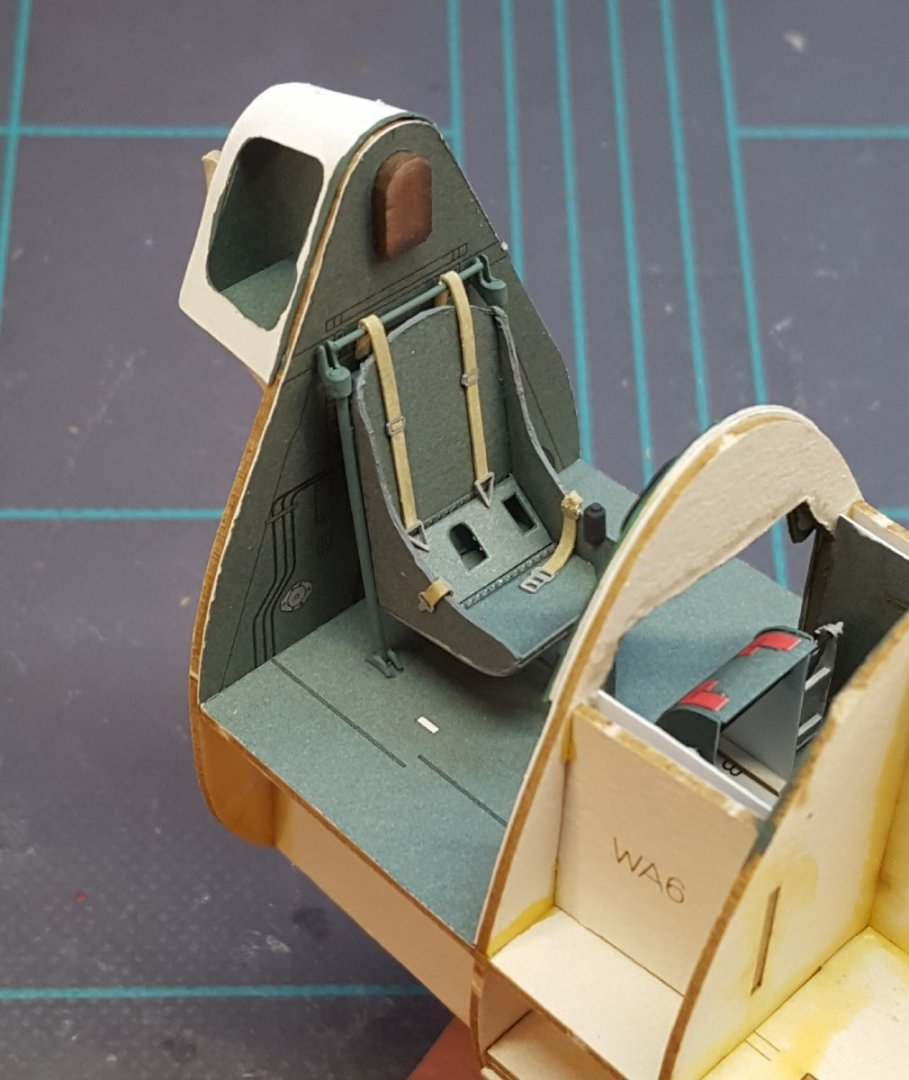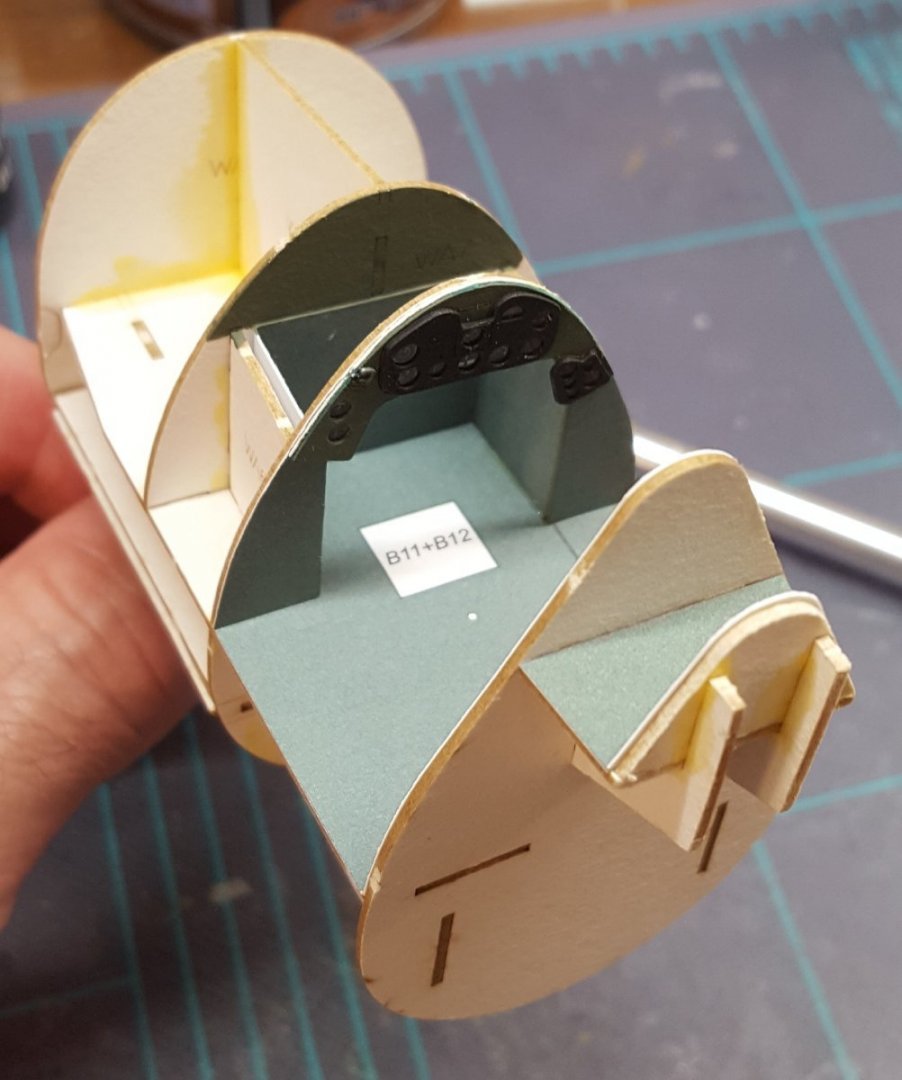-
Posts
10,434 -
Joined
-
Last visited
Content Type
Profiles
Forums
Gallery
Events
Everything posted by ccoyle
-
Beautiful job -- congratulations! The case looks great, too. Cheers!
- 157 replies
-
- model shipways
- syren
-
(and 1 more)
Tagged with:
-
Excellent kit choices -- I think you'll get a lot of enjoyment out of those two kits.
-
A few recommendations: I don't know much about the Albatros kit in particular, but it is a Mantua product, and they aren't one of the first names to come up in discussions about contenders in the "Best Kit Instructions" category. Starter tool combos have both their benefits and drawbacks. If you have zero tools to start with, then they're of course better than nothing. OTOH, many modelers, myself included, have quickly discovered after purchasing such tool sets that some tools get used a lot while others are rarely used, if ever. For that reason, some will argue in favor of a "go slow and buy only what you need" approach. Starter tool combos typically don't include tools that modelers often find indispensable once they really get into the hobby, such as rigging tools, plank bending irons, planking clamps, rotary tools, proportional dividers, etc. etc. Since you will be packing stuff into a relatively remote location and are taking on a project that may take you months to complete, you might want to think about how portable your project will be. A fully rigged ship model, even if still incomplete, is a bit fragile and thus a pain to move. For your situation, i.e. a new modeler with no experience and working remotely, I would think seriously about a less demanding project that is better suited for beginning modelers. The new Shipwright Series from Model Shipways fits this description, as do the older kits from Midwest Products that are currently out of production but still available on eBay. BlueJacket Shipcrafters also has a line of beginner kits. These kits typically spell out exactly what tools are needed to finish the kit, which eliminates guess work. Grab a kit well in advance of your planned departure date, study the plans and instructions, and get your tools and materials together before you go -- you don't want to be sitting in the middle of nowhere when you realize that you forget to pack some essential tool or bottle of glue. Be sure to start a build log once you get your project started and include some pics of the view from your tower! Cheers!
-
Indeed. Many of these classic workboats or their descendants are still active as pleasure craft, which means they can be updated or personalized in just about any fashion. I plan to modernize the heck out of my Tancook whaler, if I ever get around to it.
- 26 replies
-
- muscongus bay lobster smack
- Model Shipways
-
(and 1 more)
Tagged with:
-

Updating Build Log
ccoyle replied to Sluicemaster's topic in Using the MSW forum - **NO MODELING CONTENT IN THIS SUB-FORUM**
The easiest way to find your build log is to have a moderator provide a link to it, though I'm fairly certain that isn't what you had in mind. 😉 Perhaps the easiest way is to bookmark your log in your web browser's toolbar. You can also find it under the "see my activity" tab at your profile. On your activity page, click "topics" from the left-side menu. Easy peasy! -
Continuing with the cockpit. Part of the reason why the GPM kit is rated intermediate is that its cockpit is rather simplified, with quite a few details either printed only or omitted entirely -- makes for easier construction, but doesn't have the same level of 'wow' factor as some other kits. Also, the construction sequence of the diagrams is kind of vague, and I have been deviating from them wherever it makes sense to do so. Unlike HMV kits, the diagrams do not indicate where laser-cut optional parts are available, and I have already found a few on the frets after using the printed parts. Lastly some construction details, e.g. the seat straps, are not shown on the diagrams, making some guess work about their positioning necessary. Here is a shot of the aft bulkhead. It is not particularly interesting, but I've included the shot because most of this will be invisible after the seat is installed. And here is the seat and aft bulkhead after installation, which proves my point. The straps are from the laser-cut set. I like the extra detail on the buckles -- I don't like how easily the thin card wanted to delaminate when folded. The diagrams suggest that the wall-mounted cockpit details should be added to the inner cockpit skin, then the entire piece should be glued to the fuselage. Um . . . no. I think I will cut that piece into three pieces and do each wall separately. Cheers!
-

Mitsubishi A6M2b by CDW - Tamiya - 1:72 scale - Finished
ccoyle replied to CDW's topic in Non-ship/categorised builds
Close . . . but not real close, as far as I can ascertain. Welch was in action over MCAS Ewa, while the aircraft depicted by the Tamiya kit is that of Lt. Fusata Iida of Soryu, whose aircraft was badly damaged while attacking NAS Kaneohe Bay (Iida died later while attempting to crash his crippled plane into a hangar). -
This is the kind of name (translates as "18th century frigate") that is typically attached to old decor models that have little or no value for either collectors or serious modelers, so you are unlikely to find a home for your model at this site. Not trying to be harsh, just honest. Kind regards,
-
Small update. My modeling mojo sort of fell off the grid for a bit, but I finally got back to it. Rudder pedals are one of my least favorite tasks, because they inevitably have numerous delicate parts. Each of the 'Cat's pedals has nine parts; happily, five of them are included in the laser-cut set, which made work easier, even if still tedious. Control stick and linkage also added -- the rear part of the linkage will eventually pass through the aft bulkhead. I also tweaked my interior green a bit -- too late for the instrument panel, but the other interior features will blend in better.
-

Mitsubishi A6M2b by CDW - Tamiya - 1:72 scale - Finished
ccoyle replied to CDW's topic in Non-ship/categorised builds
Leave it to Tamiya to pack such a high level of detail into a 1/72 scale kit. You are doing it justice! -

La Palme by Tobias - 1:36 - POF
ccoyle replied to Tobias's topic in - Build logs for subjects built 1501 - 1750
Looks like you are off to a very good start! -
I recognize the names of two well-regarded Ukrainian card model publishers there as well.
-
Hi, Chrisss. Might I suggest starting a separate topic and telling us a little about yourself?
-
Hi. Please take the following not as any attempt to dissuade you -- just an honest assessment. My best guess is that your models are both built from solid-hull kits. Unfortunately, the rigging for clippers is amongst the most challenging projects that any modeler can take on. It is not the sort of task that we would expect the uninitiated to tackle with high hopes for success. Sadly, professional restoration work presents its own challenge, except that in this case the challenge is monetary -- it's a rare skill, so it doesn't come cheap. It's possible that you might be able to find a local modeler who would do the work out of consideration for the models' sentimental value for you. We can suggest some nearby clubs if you give us an indication of your whereabouts. Kind regards, Chris
-
Oh, no! Don't worry -- most of us have experienced some kind of disaster during our modeling adventures. Repair or replace may come down to the degree of damage -- based on your last photos, I assume that some of the damage is to the mould pieces?
- 34 replies
-
- first build
- Model Shipways
-
(and 2 more)
Tagged with:
-
Nice work, Harvey, on an interesting and unusual subject!
- 31 replies
-
- Sailing Canoe
- Finished
-
(and 1 more)
Tagged with:
-
Chris, I love your descriptions of the design process, since your work in bringing this new kit subject to market stands in sharp contrast to the efforts of Certain Unnamed Foreign Enterprises who somehow only manage to design "new" kits for which detailed plans just so happen to already have been published by AOTS, ANCRE, or Seawatch. 🙄
-
Welcome aboard from a California ex-pat! I moved a lot when I lived in the Golden State -- I did stints in Los Angeles, Pasadena, Montrose, Pomona, and Upland, so I know my away around SoCal a bit. Cheers!
-
Okay, here is the bulkhead after surgery. I wicked some thin CA into the cut edge, then sanded and painted the exposed surfaces, and glued the instrument panel in place. One thing to note -- I'm aware that I've got two mismatched shades of green, but most of this will not be visible on the finished model. The second shot, with the aft bulkhead only dry-fitted, approximates the lowest viewing angle that will permit viewing into the finished cockpit. Even the bit of bulkhead behind the panel will probably not be visible, but I painted it anyway -- just in case.
About us
Modelshipworld - Advancing Ship Modeling through Research
SSL Secured
Your security is important for us so this Website is SSL-Secured
NRG Mailing Address
Nautical Research Guild
237 South Lincoln Street
Westmont IL, 60559-1917
Model Ship World ® and the MSW logo are Registered Trademarks, and belong to the Nautical Research Guild (United States Patent and Trademark Office: No. 6,929,264 & No. 6,929,274, registered Dec. 20, 2022)
Helpful Links
About the NRG
If you enjoy building ship models that are historically accurate as well as beautiful, then The Nautical Research Guild (NRG) is just right for you.
The Guild is a non-profit educational organization whose mission is to “Advance Ship Modeling Through Research”. We provide support to our members in their efforts to raise the quality of their model ships.
The Nautical Research Guild has published our world-renowned quarterly magazine, The Nautical Research Journal, since 1955. The pages of the Journal are full of articles by accomplished ship modelers who show you how they create those exquisite details on their models, and by maritime historians who show you the correct details to build. The Journal is available in both print and digital editions. Go to the NRG web site (www.thenrg.org) to download a complimentary digital copy of the Journal. The NRG also publishes plan sets, books and compilations of back issues of the Journal and the former Ships in Scale and Model Ship Builder magazines.

